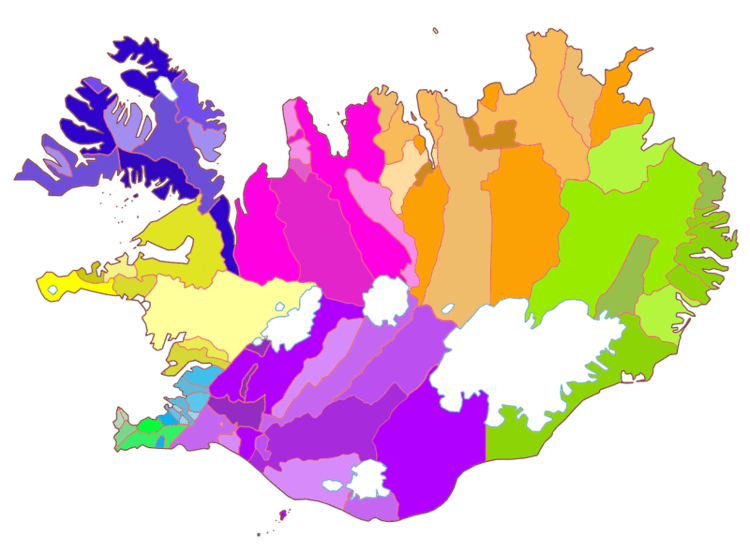 | ||
The municipalities of Iceland are local administrative areas in Iceland that provide a number of services to their inhabitants such as kindergartens, elementary schools, waste management, social services, public housing, public transportation, services to senior citizens and handicapped people. They also govern zoning and can voluntarily take on additional functions if they have the budget for it. The autonomy of municipalities over their own matters is guaranteed by the constitution of Iceland.
Contents
History
The origin of the municipalities can be traced back to the commonwealth period in the 10th century when rural communities were organized into communes (hreppar) with the main purpose of providing help for the poorest individuals in society. When urbanization began in Iceland during the 18th and 19th century, several independent townships (kaupstaðir) were created. The role of municipalities was further formalized during the 20th century and by the end of the century there was no longer any distinction made between urban and rural municipalities.
The trend in recent years has been to transfer more functions and power from the state to the municipalities. This has called for larger municipalities. The government encourages municipalities to merge but has taken a different approach to the issue than governments in other Nordic countries where forced amalgamation is regularly carried out (such as the municipal reform in Denmark that took effect in 2007). Instead the process is voluntary. Municipalities negotiate possible mergers between themselves and the merger has to be agreed upon by the people of each municipality in a referendum. A similar approach is used by the Faroese government. Municipalities with fewer than 50 people may be merged with others by force though.
The number of municipalities peaked in the mid-20th century. There were 229 of them in 1950. In 1995 their number had reduced to 170. In the year 2000 the number of municipalities in Iceland was 124 and since 1 January 2013 they are 74.
Government
The municipalities are governed by municipal councils which are directly elected every four years. Municipal elections were last held on 29 May 2010. The sizes of these councils vary from five members in the smallest municipalities to fifteen in the largest one. Most municipalities except for the very small ones hire an executive manager who may or may not be a member of the municipal council. These managers are usually referred to as mayors (bæjarstjóri/borgarstjóri) in the mostly urban municipalities but "municipal manager" (sveitarstjóri) in the rural or mixed municipalities. It is common for these executive managers to be professionally hired and politically independent.
